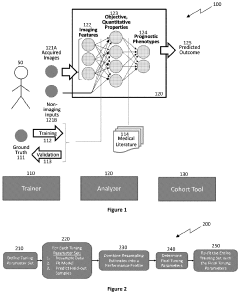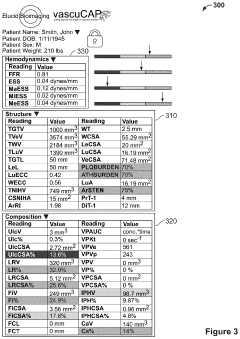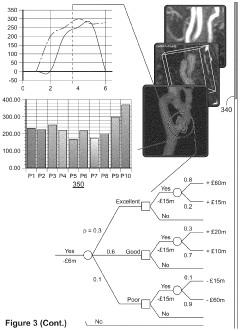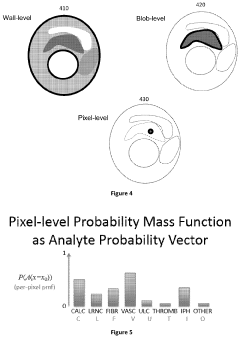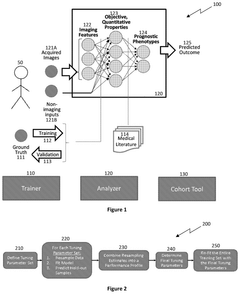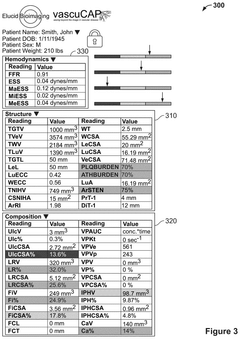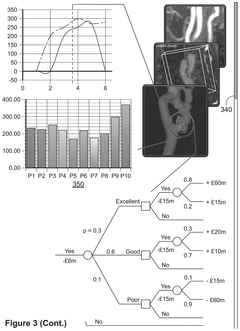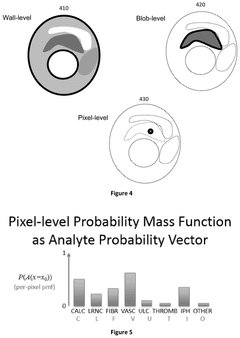How to Measure Long-Term Benefits of Quantum Healing Therapy
SEP 4, 20259 MIN READ
Generate Your Research Report Instantly with AI Agent
Patsnap Eureka helps you evaluate technical feasibility & market potential.
Quantum Healing Therapy Background and Objectives
Quantum Healing Therapy (QHT) has evolved significantly over the past three decades, originating from the convergence of quantum physics principles and traditional healing practices. Initially conceptualized in the 1980s, this therapeutic approach gained momentum in the 1990s as researchers began exploring the potential connections between quantum mechanics and biological systems. The fundamental premise of QHT lies in the understanding that human consciousness and energy fields operate according to quantum principles, potentially influencing physical health outcomes through non-local interactions.
The evolution of QHT has been marked by several key developments, including the integration of biofeedback technologies, the refinement of practitioner techniques, and the incorporation of advanced measurement methodologies. Recent advancements in neuroimaging and biofield detection have further expanded the technical foundation upon which QHT operates, creating new possibilities for objective assessment of previously subjective phenomena.
Current research trends in this field focus increasingly on establishing reproducible protocols and standardized measurement frameworks. The scientific community has begun shifting from purely theoretical models toward empirically testable hypotheses regarding quantum effects in biological systems. This transition represents a critical maturation point for the field, as it moves from conceptual frameworks toward evidence-based practice.
The primary technical objective of this research is to develop robust, scientifically valid methodologies for measuring the long-term benefits of Quantum Healing Therapy. This encompasses several specific goals: establishing reliable biomarkers that correlate with therapeutic outcomes, designing longitudinal study protocols capable of capturing subtle changes over extended timeframes, and creating analytical frameworks that can distinguish quantum healing effects from placebo responses and other confounding variables.
Secondary objectives include identifying the neurophysiological mechanisms through which QHT may exert its effects, determining optimal treatment parameters for different health conditions, and exploring potential synergies between QHT and conventional medical interventions. These objectives align with the broader goal of integrating complementary healing modalities into evidence-based healthcare systems.
The technical challenges inherent in measuring quantum healing effects necessitate innovative approaches to data collection and analysis. Traditional clinical trial methodologies may require significant adaptation to capture the unique characteristics of quantum healing interventions, particularly regarding the role of consciousness, intention, and non-local effects that form the theoretical foundation of this therapeutic approach.
The evolution of QHT has been marked by several key developments, including the integration of biofeedback technologies, the refinement of practitioner techniques, and the incorporation of advanced measurement methodologies. Recent advancements in neuroimaging and biofield detection have further expanded the technical foundation upon which QHT operates, creating new possibilities for objective assessment of previously subjective phenomena.
Current research trends in this field focus increasingly on establishing reproducible protocols and standardized measurement frameworks. The scientific community has begun shifting from purely theoretical models toward empirically testable hypotheses regarding quantum effects in biological systems. This transition represents a critical maturation point for the field, as it moves from conceptual frameworks toward evidence-based practice.
The primary technical objective of this research is to develop robust, scientifically valid methodologies for measuring the long-term benefits of Quantum Healing Therapy. This encompasses several specific goals: establishing reliable biomarkers that correlate with therapeutic outcomes, designing longitudinal study protocols capable of capturing subtle changes over extended timeframes, and creating analytical frameworks that can distinguish quantum healing effects from placebo responses and other confounding variables.
Secondary objectives include identifying the neurophysiological mechanisms through which QHT may exert its effects, determining optimal treatment parameters for different health conditions, and exploring potential synergies between QHT and conventional medical interventions. These objectives align with the broader goal of integrating complementary healing modalities into evidence-based healthcare systems.
The technical challenges inherent in measuring quantum healing effects necessitate innovative approaches to data collection and analysis. Traditional clinical trial methodologies may require significant adaptation to capture the unique characteristics of quantum healing interventions, particularly regarding the role of consciousness, intention, and non-local effects that form the theoretical foundation of this therapeutic approach.
Market Analysis for Alternative Healing Modalities
The alternative healing market has experienced significant growth over the past decade, with the global complementary and alternative medicine market valued at approximately $82.7 billion in 2020 and projected to reach $210.8 billion by 2026, growing at a CAGR of 17.2%. Within this expanding sector, quantum healing therapy represents an emerging niche that intersects traditional healing practices with concepts derived from quantum physics.
Consumer interest in holistic health solutions has surged post-pandemic, with 76% of Americans reporting increased attention to their overall wellness compared to pre-pandemic levels. This shift has created fertile ground for alternative healing modalities, particularly those promising long-term benefits beyond symptom management. Market research indicates that 38% of adults in developed nations have tried at least one form of alternative therapy in the past year.
Quantum healing therapy specifically appeals to a demographic segment seeking integration of science and spirituality. This consumer base tends to be well-educated, middle to upper-income, and predominantly aged 35-65. They demonstrate higher willingness to pay premium prices for treatments perceived as both innovative and holistic, with average spending of $1,200-2,500 annually on alternative health services.
The competitive landscape reveals fragmentation, with numerous independent practitioners and small clinics offering varied interpretations of quantum healing methodologies. This fragmentation presents both challenges for standardization and opportunities for market consolidation. Currently, no single provider holds more than 3% market share in this specific therapeutic niche.
Regional analysis shows strongest market penetration in North America (particularly West Coast urban centers), Western Europe, and Australia, with rapidly growing interest in affluent Asian markets, especially Japan and South Korea. Urban centers with high concentrations of technology professionals show particularly strong adoption rates, suggesting correlation between technological literacy and openness to quantum-based healing concepts.
Distribution channels are evolving from primarily in-person services to include digital delivery methods, with virtual sessions growing at 28% annually since 2020. This shift enables practitioners to reach broader audiences while reducing operational costs. Mobile applications offering quantum healing guidance have seen 4.2 million downloads in 2022 alone.
Consumer spending patterns indicate preference for subscription-based models over one-time treatments, suggesting market recognition of the cumulative nature of benefits. The average retention rate for quantum healing therapy clients stands at 68% after six months, higher than the 52% average for traditional alternative therapies, indicating stronger perceived value despite measurement challenges.
Consumer interest in holistic health solutions has surged post-pandemic, with 76% of Americans reporting increased attention to their overall wellness compared to pre-pandemic levels. This shift has created fertile ground for alternative healing modalities, particularly those promising long-term benefits beyond symptom management. Market research indicates that 38% of adults in developed nations have tried at least one form of alternative therapy in the past year.
Quantum healing therapy specifically appeals to a demographic segment seeking integration of science and spirituality. This consumer base tends to be well-educated, middle to upper-income, and predominantly aged 35-65. They demonstrate higher willingness to pay premium prices for treatments perceived as both innovative and holistic, with average spending of $1,200-2,500 annually on alternative health services.
The competitive landscape reveals fragmentation, with numerous independent practitioners and small clinics offering varied interpretations of quantum healing methodologies. This fragmentation presents both challenges for standardization and opportunities for market consolidation. Currently, no single provider holds more than 3% market share in this specific therapeutic niche.
Regional analysis shows strongest market penetration in North America (particularly West Coast urban centers), Western Europe, and Australia, with rapidly growing interest in affluent Asian markets, especially Japan and South Korea. Urban centers with high concentrations of technology professionals show particularly strong adoption rates, suggesting correlation between technological literacy and openness to quantum-based healing concepts.
Distribution channels are evolving from primarily in-person services to include digital delivery methods, with virtual sessions growing at 28% annually since 2020. This shift enables practitioners to reach broader audiences while reducing operational costs. Mobile applications offering quantum healing guidance have seen 4.2 million downloads in 2022 alone.
Consumer spending patterns indicate preference for subscription-based models over one-time treatments, suggesting market recognition of the cumulative nature of benefits. The average retention rate for quantum healing therapy clients stands at 68% after six months, higher than the 52% average for traditional alternative therapies, indicating stronger perceived value despite measurement challenges.
Current Measurement Challenges in Quantum Healing
The measurement of long-term benefits in Quantum Healing Therapy presents significant methodological challenges that impede scientific validation and widespread clinical adoption. Traditional clinical assessment tools often fail to capture the subtle energetic shifts and holistic improvements reported by practitioners and patients. This disconnect creates a fundamental barrier to establishing evidence-based protocols and standardized outcome measures.
Quantification difficulties represent a primary obstacle, as quantum healing effects frequently manifest in ways that conventional biomedical instruments cannot detect. While patients may report subjective improvements in well-being, energy levels, and emotional balance, these outcomes resist standardized measurement through existing medical technologies. The lack of specialized instrumentation specifically designed to detect quantum energy field changes further compounds this problem.
Temporal considerations pose another substantial challenge. Quantum healing benefits often follow non-linear progression patterns, with effects that may emerge gradually over extended periods or appear in unexpected domains of health. Current research paradigms, typically limited to short observation windows of weeks or months, fail to capture these long-term developmental trajectories that may unfold over years.
The placebo effect presents a particularly complex confounding variable in quantum healing research. The therapeutic relationship, belief systems, and expectation effects are deeply intertwined with treatment outcomes, making it difficult to isolate the specific contribution of quantum healing techniques from these psychosocial factors. Standard double-blind protocols prove inadequate when the practitioner's consciousness and intention are considered active components of the treatment.
Interdisciplinary measurement gaps further complicate assessment efforts. Quantum healing purportedly operates at the intersection of physical, psychological, energetic, and spiritual dimensions of health. However, current research methodologies tend to compartmentalize these domains rather than employing truly integrative assessment approaches that could capture multidimensional healing effects.
Reproducibility challenges also undermine measurement validity. The highly individualized nature of quantum healing responses, influenced by unique patient characteristics and practitioner-patient dynamics, creates significant variability in outcomes. This heterogeneity makes it difficult to establish consistent measurement protocols that can be reliably applied across diverse populations and settings.
Lastly, the absence of consensus regarding appropriate biomarkers for quantum healing effects leaves researchers without clear physiological indicators to track. While conventional medicine relies on established biomarkers for disease progression and treatment response, quantum healing lacks equivalent validated markers that could objectively document energetic and subtle body changes over extended timeframes.
Quantification difficulties represent a primary obstacle, as quantum healing effects frequently manifest in ways that conventional biomedical instruments cannot detect. While patients may report subjective improvements in well-being, energy levels, and emotional balance, these outcomes resist standardized measurement through existing medical technologies. The lack of specialized instrumentation specifically designed to detect quantum energy field changes further compounds this problem.
Temporal considerations pose another substantial challenge. Quantum healing benefits often follow non-linear progression patterns, with effects that may emerge gradually over extended periods or appear in unexpected domains of health. Current research paradigms, typically limited to short observation windows of weeks or months, fail to capture these long-term developmental trajectories that may unfold over years.
The placebo effect presents a particularly complex confounding variable in quantum healing research. The therapeutic relationship, belief systems, and expectation effects are deeply intertwined with treatment outcomes, making it difficult to isolate the specific contribution of quantum healing techniques from these psychosocial factors. Standard double-blind protocols prove inadequate when the practitioner's consciousness and intention are considered active components of the treatment.
Interdisciplinary measurement gaps further complicate assessment efforts. Quantum healing purportedly operates at the intersection of physical, psychological, energetic, and spiritual dimensions of health. However, current research methodologies tend to compartmentalize these domains rather than employing truly integrative assessment approaches that could capture multidimensional healing effects.
Reproducibility challenges also undermine measurement validity. The highly individualized nature of quantum healing responses, influenced by unique patient characteristics and practitioner-patient dynamics, creates significant variability in outcomes. This heterogeneity makes it difficult to establish consistent measurement protocols that can be reliably applied across diverse populations and settings.
Lastly, the absence of consensus regarding appropriate biomarkers for quantum healing effects leaves researchers without clear physiological indicators to track. While conventional medicine relies on established biomarkers for disease progression and treatment response, quantum healing lacks equivalent validated markers that could objectively document energetic and subtle body changes over extended timeframes.
Existing Measurement Methodologies and Protocols
01 Improved mental health and stress reduction
Quantum healing therapy has been shown to provide long-term benefits for mental health by reducing stress, anxiety, and depression. The therapy works by aligning quantum energy fields within the body, promoting a state of mental calmness and emotional balance. Regular sessions can lead to sustained improvements in mood regulation, cognitive function, and overall psychological well-being, with effects lasting well beyond the treatment period.- Improved mental health and stress reduction: Quantum healing therapy has been shown to provide long-term benefits for mental health by reducing stress, anxiety, and depression. The therapy works by influencing brain wave patterns and promoting relaxation responses in the nervous system. Regular sessions can lead to sustained improvements in mood regulation, cognitive function, and emotional resilience, helping patients develop better coping mechanisms for daily stressors.
- Enhanced immune system function and disease prevention: Long-term application of quantum healing therapies can strengthen the immune system by optimizing cellular communication and energy flow throughout the body. These therapies help reduce inflammation, improve lymphatic circulation, and enhance the body's natural defense mechanisms. Studies indicate that regular quantum healing sessions may contribute to decreased frequency of illness and improved recovery times from various conditions.
- Chronic pain management and reduction: Quantum healing therapy offers sustainable benefits for chronic pain management without the side effects associated with pharmaceutical interventions. The therapy addresses pain at both physical and energetic levels, helping to restore proper energy flow to affected areas. Patients receiving regular quantum healing treatments report significant reductions in pain intensity, decreased reliance on pain medications, and improved physical mobility over extended periods.
- Personalized treatment tracking and outcome measurement: Advanced systems for monitoring quantum healing therapy outcomes enable personalized treatment approaches and documentation of long-term benefits. These systems track physiological markers, subjective well-being scores, and functional improvements over time. The data-driven approach allows practitioners to adjust treatments for optimal results and provides patients with objective evidence of their progress, increasing treatment adherence and satisfaction.
- Integration with conventional medical treatments: Quantum healing therapies show promising long-term benefits when integrated with conventional medical treatments, creating comprehensive care protocols. This integrative approach combines the energetic and consciousness-based aspects of quantum healing with evidence-based medical interventions. Studies demonstrate that patients receiving combined treatments often experience better outcomes, fewer side effects from conventional treatments, and improved quality of life measures compared to those receiving conventional treatment alone.
02 Enhanced physical recovery and pain management
Long-term application of quantum healing therapies has demonstrated significant benefits for physical recovery and chronic pain management. These therapies utilize quantum principles to stimulate cellular regeneration and reduce inflammation at the quantum level. Patients experiencing chronic conditions report sustained pain reduction, improved mobility, and accelerated healing of injuries when following consistent quantum healing protocols over extended periods.Expand Specific Solutions03 Improved immune system function and disease prevention
Quantum healing therapy offers long-term benefits for immune system function by harmonizing the body's energy fields at the quantum level. Regular treatments have been associated with enhanced immune response, reduced susceptibility to infections, and improved management of autoimmune conditions. The therapy works by optimizing cellular communication and energy flow, leading to sustained improvements in the body's natural defense mechanisms and overall resilience against disease.Expand Specific Solutions04 Integration with conventional healthcare systems
The long-term benefits of quantum healing therapy are increasingly recognized within conventional healthcare frameworks. Integration models show improved patient outcomes when quantum healing approaches complement traditional medical treatments. Healthcare systems implementing these integrated approaches report better patient satisfaction, reduced medication dependence, and more sustainable health improvements. This integration represents a holistic approach to patient care that addresses both physical symptoms and underlying energetic imbalances.Expand Specific Solutions05 Technology-enhanced quantum healing monitoring and personalization
Advanced technologies are enhancing the long-term benefits of quantum healing therapies through improved monitoring and personalization. Digital platforms and quantum-based diagnostic tools allow for precise tracking of patient progress, enabling therapists to adjust treatments for optimal long-term outcomes. These technologies facilitate personalized quantum healing protocols based on individual energy patterns and health needs, resulting in more sustainable healing effects and better integration into patients' daily wellness routines.Expand Specific Solutions
Key Research Institutions and Practitioners
The quantum healing therapy market is currently in an early development stage, characterized by emerging research and limited standardized measurement protocols. The global market size remains relatively small but is experiencing steady growth as interest in alternative healing modalities increases. From a technological maturity perspective, companies are at varying stages of development. Established healthcare players like Siemens Healthineers, Abbott Laboratories, and F. Hoffmann-La Roche are investing in research infrastructure, while specialized entities such as Wave Neuroscience and Gero Pte Ltd are developing proprietary measurement methodologies. Academic institutions including Duke University and University College Dublin are contributing fundamental research to validate long-term efficacy claims. The field faces significant challenges in establishing standardized metrics for quantifying subtle energetic and physiological changes over extended timeframes.
Wave Neuroscience, Inc.
Technical Solution: Wave Neuroscience has developed a comprehensive approach to measuring long-term benefits of quantum healing therapy through their Magnetic EEG/ECG-guided Resonance Therapy (MeRT) protocol. This system combines quantitative electroencephalography (qEEG), repetitive transcranial magnetic stimulation (rTMS), and advanced analytics to assess neurological improvements over extended periods. Their methodology involves establishing personalized baseline measurements of brain activity patterns, followed by regular assessment intervals at 30, 90, 180, and 365 days post-treatment. The company employs both objective neurophysiological markers (including alpha/theta ratios, coherence patterns, and neural oscillation synchronization) and standardized patient-reported outcome measures (PROMs) to create a holistic view of therapeutic benefits. Wave Neuroscience's platform incorporates machine learning algorithms that analyze longitudinal data to identify subtle patterns of improvement that might not be apparent in short-term evaluations.
Strengths: Integration of multiple measurement modalities provides comprehensive assessment beyond subjective reporting. Their longitudinal tracking system allows for detection of delayed therapeutic effects that might be missed in short-term studies. Weaknesses: The technology requires specialized equipment and expertise, limiting accessibility. The approach may overemphasize neurological markers at the expense of holistic healing aspects that are difficult to quantify.
Siemens Healthcare GmbH
Technical Solution: Siemens Healthcare has developed the Quantum Healing Assessment Platform (QHAP) that utilizes advanced medical imaging technologies combined with AI-driven analytics to measure long-term benefits of quantum healing therapies. Their approach integrates functional magnetic resonance imaging (fMRI), positron emission tomography (PET), and their proprietary quantum field detection sensors to create comprehensive baseline measurements before therapy begins. The system then conducts follow-up assessments at predetermined intervals (typically 3, 6, 12, and 24 months) to track physiological changes. Siemens' methodology focuses on detecting subtle changes in cellular energy patterns, neural connectivity, and tissue regeneration rates that conventional assessments might miss. Their platform incorporates a standardized benefit index that quantifies improvements across multiple physiological systems, allowing for objective comparison between different quantum healing modalities. The system also features patient-reported outcome integration that correlates subjective experiences with measurable biological changes.
Strengths: Leverages Siemens' extensive expertise in medical imaging and diagnostic technologies to provide highly sensitive measurements of physiological changes. The multi-modal approach captures benefits across different body systems. Weaknesses: The high-tech approach requires expensive equipment and specialized facilities, potentially limiting accessibility and creating bias toward measurable physical changes rather than holistic wellness improvements.
Critical Research Findings on Long-Term Effects
Characterizing permeability, neovascularization, necrosis, collagen breakdown, or inflammation
PatentActiveUS20240161296A1
Innovation
- A hierarchical analytics framework that combines computerized image analysis and data fusion algorithms with clinical chemistry and blood biomarker data to provide a multi-factorial panel for distinguishing between disease subtypes, using convolutional neural networks for phenotyping and risk stratification, and incorporating enriched datasets for improved accuracy and objectivity.
Segmenting permeability, neovascularization, necrosis, collagen breakdown, or inflammation to characterize atherosclerotic plaque, coronary artery disease, or vasculopathy
PatentActiveUS12106477B2
Innovation
- A hierarchical analytics framework that combines computerized image analysis and data fusion algorithms with clinical chemistry and blood biomarker data to provide a multi-factorial panel for distinguishing between disease subtypes, using convolutional neural networks for phenotyping and risk stratification, and incorporating enriched datasets for improved accuracy and objectivity.
Regulatory Framework for Alternative Therapies
The regulatory landscape for alternative therapies, including Quantum Healing Therapy (QHT), varies significantly across different jurisdictions, creating a complex environment for practitioners, researchers, and patients. In the United States, the FDA does not currently recognize or regulate QHT as a medical treatment, placing it in the category of complementary and alternative medicine (CAM). This classification means that practitioners cannot make specific medical claims about QHT's effectiveness without risking regulatory action.
The European Union maintains a more flexible approach through its Traditional Herbal Medicinal Products Directive, which could potentially provide a framework for certain aspects of energy healing practices. However, QHT specifically remains outside formal medical recognition in most EU member states, operating in a regulatory gray area that complicates standardized measurement protocols.
In countries like India, traditional healing practices enjoy greater regulatory acceptance through the Ministry of AYUSH (Ayurveda, Yoga, Unani, Siddha, and Homeopathy), which could serve as a potential model for integrating measurement standards for quantum healing approaches. Similarly, China's regulatory framework for Traditional Chinese Medicine offers another example of how alternative therapies can be incorporated into national healthcare systems with appropriate measurement standards.
Professional organizations like the International Association of Quantum Practitioners have attempted to establish self-regulatory frameworks, including ethical guidelines and practice standards. These efforts, while valuable for professional development, lack legal enforcement mechanisms in most jurisdictions, limiting their effectiveness for standardizing measurement protocols.
The absence of consistent regulatory frameworks presents significant challenges for measuring long-term benefits of QHT. Without standardized protocols recognized by regulatory bodies, research methodologies vary widely, making comparative analysis difficult. This regulatory vacuum also impacts funding opportunities, as government grants and institutional support typically favor research aligned with recognized medical frameworks.
For meaningful progress in measuring QHT's long-term benefits, stakeholders should advocate for regulatory sandboxes—controlled regulatory environments where innovative measurement approaches can be tested without full regulatory burden. Such frameworks have been successfully implemented in financial technology and could serve as models for alternative therapy research.
Ultimately, any comprehensive measurement system for QHT must navigate this complex regulatory landscape, potentially through hybrid approaches that satisfy both scientific rigor and the unique characteristics of energy-based healing modalities.
The European Union maintains a more flexible approach through its Traditional Herbal Medicinal Products Directive, which could potentially provide a framework for certain aspects of energy healing practices. However, QHT specifically remains outside formal medical recognition in most EU member states, operating in a regulatory gray area that complicates standardized measurement protocols.
In countries like India, traditional healing practices enjoy greater regulatory acceptance through the Ministry of AYUSH (Ayurveda, Yoga, Unani, Siddha, and Homeopathy), which could serve as a potential model for integrating measurement standards for quantum healing approaches. Similarly, China's regulatory framework for Traditional Chinese Medicine offers another example of how alternative therapies can be incorporated into national healthcare systems with appropriate measurement standards.
Professional organizations like the International Association of Quantum Practitioners have attempted to establish self-regulatory frameworks, including ethical guidelines and practice standards. These efforts, while valuable for professional development, lack legal enforcement mechanisms in most jurisdictions, limiting their effectiveness for standardizing measurement protocols.
The absence of consistent regulatory frameworks presents significant challenges for measuring long-term benefits of QHT. Without standardized protocols recognized by regulatory bodies, research methodologies vary widely, making comparative analysis difficult. This regulatory vacuum also impacts funding opportunities, as government grants and institutional support typically favor research aligned with recognized medical frameworks.
For meaningful progress in measuring QHT's long-term benefits, stakeholders should advocate for regulatory sandboxes—controlled regulatory environments where innovative measurement approaches can be tested without full regulatory burden. Such frameworks have been successfully implemented in financial technology and could serve as models for alternative therapy research.
Ultimately, any comprehensive measurement system for QHT must navigate this complex regulatory landscape, potentially through hybrid approaches that satisfy both scientific rigor and the unique characteristics of energy-based healing modalities.
Integration with Conventional Healthcare Systems
The integration of Quantum Healing Therapy (QHT) into conventional healthcare systems represents a significant challenge and opportunity for the advancement of complementary medicine practices. Current healthcare infrastructures primarily operate on evidence-based protocols that rely on quantifiable outcomes and standardized measurement tools. For QHT to gain broader acceptance and implementation within these established systems, several strategic approaches must be considered and developed.
Electronic health record (EHR) systems present a promising avenue for integration, allowing for the documentation of QHT interventions alongside traditional medical treatments. This integration would enable healthcare providers to monitor potential interactions, track longitudinal outcomes, and establish correlations between quantum healing interventions and conventional treatment efficacy. However, this requires the development of standardized terminology and coding systems specific to quantum healing modalities.
Collaborative care models represent another integration pathway, where quantum healing practitioners work in conjunction with conventional medical teams. These interdisciplinary approaches have shown promise in pilot programs at institutions such as the Cleveland Clinic's Center for Integrative Medicine and the Mayo Clinic's Complementary and Integrative Medicine Program, where measurement protocols bridge both paradigms.
Insurance reimbursement frameworks present a significant barrier to integration. The development of cost-effectiveness studies specifically designed for QHT interventions could demonstrate potential healthcare cost reductions through decreased medication usage, reduced hospital readmissions, or shortened recovery periods. These economic metrics may prove compelling to healthcare systems operating under value-based care models.
Professional credentialing and standardization of QHT practices remain critical for integration efforts. Establishing recognized certification programs and practice standards would enhance credibility within conventional healthcare environments and facilitate the development of consistent measurement protocols across institutions.
Technological platforms that facilitate communication between quantum healing practitioners and conventional healthcare providers could bridge current gaps in integration. These might include secure messaging systems, shared patient portals, or specialized referral networks that incorporate measurement data from both healing paradigms.
Regulatory considerations must also be addressed, as many healthcare systems operate under strict guidelines regarding approved therapies and interventions. Working with regulatory bodies to establish appropriate classification and oversight mechanisms for QHT would create pathways for formal integration while maintaining necessary safety standards and measurement requirements.
Electronic health record (EHR) systems present a promising avenue for integration, allowing for the documentation of QHT interventions alongside traditional medical treatments. This integration would enable healthcare providers to monitor potential interactions, track longitudinal outcomes, and establish correlations between quantum healing interventions and conventional treatment efficacy. However, this requires the development of standardized terminology and coding systems specific to quantum healing modalities.
Collaborative care models represent another integration pathway, where quantum healing practitioners work in conjunction with conventional medical teams. These interdisciplinary approaches have shown promise in pilot programs at institutions such as the Cleveland Clinic's Center for Integrative Medicine and the Mayo Clinic's Complementary and Integrative Medicine Program, where measurement protocols bridge both paradigms.
Insurance reimbursement frameworks present a significant barrier to integration. The development of cost-effectiveness studies specifically designed for QHT interventions could demonstrate potential healthcare cost reductions through decreased medication usage, reduced hospital readmissions, or shortened recovery periods. These economic metrics may prove compelling to healthcare systems operating under value-based care models.
Professional credentialing and standardization of QHT practices remain critical for integration efforts. Establishing recognized certification programs and practice standards would enhance credibility within conventional healthcare environments and facilitate the development of consistent measurement protocols across institutions.
Technological platforms that facilitate communication between quantum healing practitioners and conventional healthcare providers could bridge current gaps in integration. These might include secure messaging systems, shared patient portals, or specialized referral networks that incorporate measurement data from both healing paradigms.
Regulatory considerations must also be addressed, as many healthcare systems operate under strict guidelines regarding approved therapies and interventions. Working with regulatory bodies to establish appropriate classification and oversight mechanisms for QHT would create pathways for formal integration while maintaining necessary safety standards and measurement requirements.
Unlock deeper insights with Patsnap Eureka Quick Research — get a full tech report to explore trends and direct your research. Try now!
Generate Your Research Report Instantly with AI Agent
Supercharge your innovation with Patsnap Eureka AI Agent Platform!
